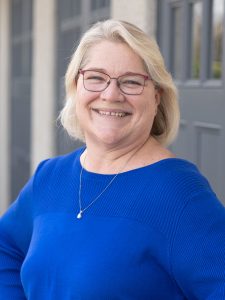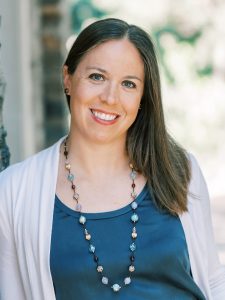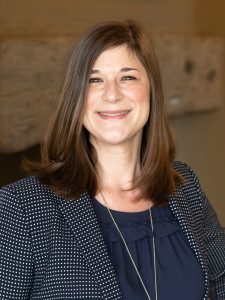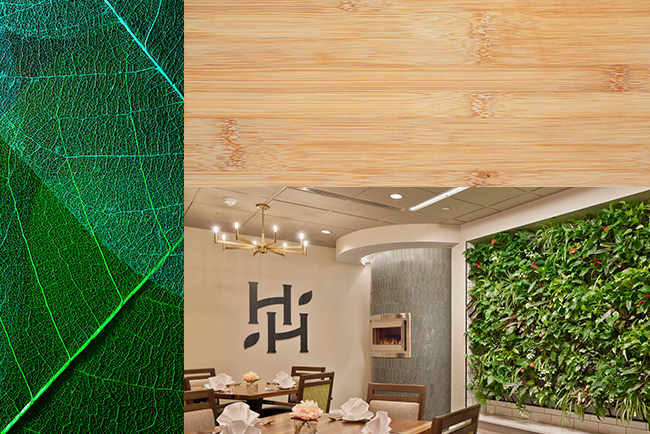Interior designer credentialing reflects a commitment to the highest professional standards. This is particularly important to our senior living and educational sector clients, but this added level of credentialing is beneficial for any type of commercial, hospitality or institutional space.
Starting with the Basics: Interior Design Professionals
The interior design profession requires specialized education and training. Interior design professionals typically earn a Bachelor’s or Master’s degree in interior design and/or architecture, have worked in the field for two or more years, and hold National Council for Interior Design Qualification (NCIDQ) certification.
The current exam encompasses seven core competencies of interior design: building systems, codes, construction standards, contract administration, design application, professional practice and project coordination. The NCIDQ examination is regularly updated to reflect current knowledge required to design safe, functional and innovative interior spaces.
According to the Council for Interior Design Qualification,
“Interior design is a distinct profession with specialized knowledge applied to the planning and design of interior environments that promote health, safety, and welfare while supporting and enhancing the human experience. Interior designers are responsible for providing a safe, functional and accessible environment for their clients and meet this goal through attention, adherence and focus on codes, standards, regulations, accessibility, health, safety and welfare.”
We recently celebrated RLPS Interiors team member Ashley Sowa passing the NCIDQ Examination. This led us to ask a few of our designers to share their thoughts on the value of interior designer credentialing for our clients.
Reason 1: Health, Safety and Welfare of End Users
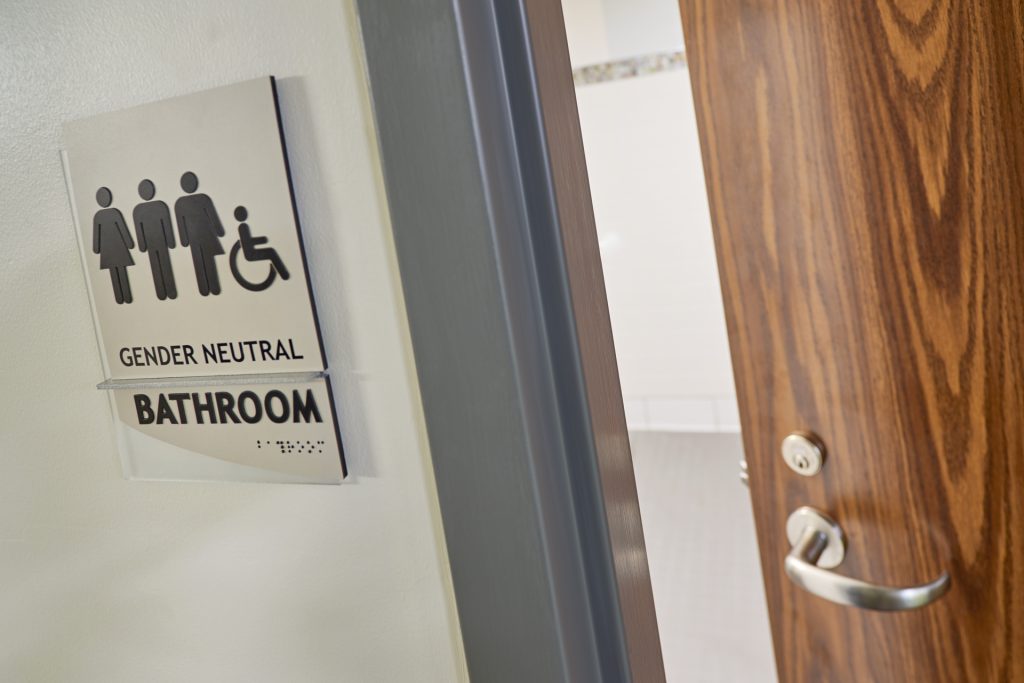
Interior design professionals are responsible for ADA-compliant signage for wayfinding and safety.
Deb: It’s not going to be noticeable until it impacts you directly, but building evacuation plans are a crucial part of what we do. We work with the architectural team to review building code requirements, create clear circulation pathways and exit plans. And interior designers also specify the ADA-compliant signage that helps with wayfinding–in an emergency and on a day-to-day basis. We also consider fire ratings of partitions and door assemblies for different types of occupant areas.
Kristin: Interior design also intersects with health, safety and welfare through material selections to minimize the chance of injury. For example, we focus on coefficient of friction to consider the slip resistance properties of flooring materials. We also look for potential issues such as a casework edge or furniture piece that intersects with a circulation path. These considerations apply to senior living communities, schools and universities or any public building areas such as entry lobbies, corridors or stairways.
Jessie: Another health aspect we consider is how material and product selections can impact indoor air quality – whether it’s paints and stains, flooring, wallcoverings and adhesives, millwork, or furnishings. We avoid materials that off gas like Volatile Organic Compounds (VOCs) or other toxins. We work with facility staff to review cleaning protocols to specify materials that not only look good, but also are functional and durable throughout their lifecycle.
Reason 2: Project Coordination
Understanding how spaces come together, and coordinating closely with other design professionals, is critical for continuity of human-centered design objectives. For example, multi-purpose event venues require coordination between interior design professionals, architects, lighting engineers, acoustical technicians and audio-visual technology specialists.
Amy: Interior design touches many aspects beyond the aesthetic elements at the forefront. We coordinate with the architects and engineers on space planning, ergonomics, adjacency requirements, lighting levels, building technology integration, environmental factors, accessibility guidelines, building codes and sometimes LEED, WELL or related building standards.
Kristin: We define everything from placement of partitions in a dining venue to outlet locations in a lobby. And we get into the details, like ceiling heights and materials for acoustical control whether it’s a front desk, elevator lobby, coffee shop or performing arts center.
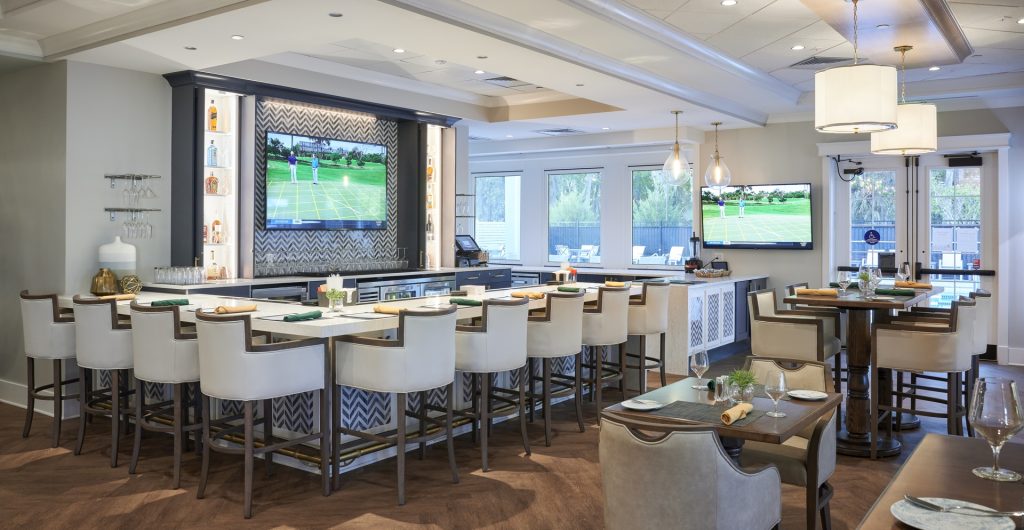
RLPS interior designers collaborate with lighting engineers to define how a space functions, highlight specific features, and in some cases, assist with wayfinding. The end result is often multiple layers of lighting to achieve these diverse goals, as illustrated in this pub example from Vicar’s Landing at Oak Bridge in Ponte Vedra Beach, Florida.
Reason 3: Inspire People and Transform Lives
Inspiring and transformative learning spaces must meld aesthetic appeal with flexibility, accessibility, acoustics, technology integration, durability and a myriad of other considerations from floor to ceiling and everything in between.
Amy: We tend to associate the idea of “Inspiring People” with aesthetic features, and how a space looks definitely matters, but I think it goes beyond that. I think we can also inspire students—and teachers—by providing flexible classroom layouts and furniture options that can adapt to different learning styles. And these principles tie into health and well-being. We transform lives by helping to keep spaces accessible and incorporating biophilic design strategies to reinforce natural connections which can provide a myriad of physiological benefits.
Jessie: When I think of inspiring people and transforming lives, I think it’s about planning around natural light and views, creating spaces that support social gatherings and enrichment and allowing people to live life to their fullest extent. For example, it’s creating a distinctively themed dining venue with expansive windows overlooking a lake. But it’s also making sure that we have considered the flooring transition for people accessing the space using wheelchairs or walkers. It’s introducing a mix of contemporary seating options that reinforce a hospitality-inspired design aesthetic. But it’s also making sure those options are an appropriate height and depth for ease of use by older adults.
Deb: From a visual perspective, it’s also about respecting the regional and cultural heritage. In this way, we can provide spaces that people can connect with and design details that support the desired brand experience in a visual form that is meaningful to the end user. For example, we will often explore opportunities to incorporate local artisans’ work or historical photographs in the public areas of senior living communities.
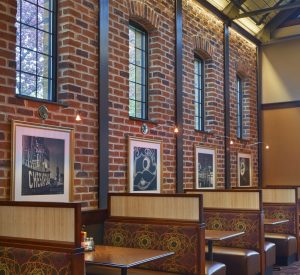 Regional relevance is imperative for creating engaging, inclusive settings that resonate with end users. This bistro at Charlestown Community, near Baltimore, Maryland takes design inspiration from nearby Camden Yards with a contemporary industrial aesthetic using local brick. The design also features artwork highlighting local architecture.
Regional relevance is imperative for creating engaging, inclusive settings that resonate with end users. This bistro at Charlestown Community, near Baltimore, Maryland takes design inspiration from nearby Camden Yards with a contemporary industrial aesthetic using local brick. The design also features artwork highlighting local architecture.
Interior Designer Credentialing Matters
Interior design elevates the human experience through aesthetically-pleasing environments that capture our imagination, motivate, engage and inspire. However, there are also hundreds of behind-the-scenes details that have a tremendous impact on how a space feels and functions.
Interior designer credentialing is an important tool to help our team meld form and function for beautiful spaces that are code-compliant, accessible, and inclusive.
The RLPS Interiors team includes 11 interiors designers who are NCIDQ Certified. Several are also LEED and WELL Accredited Professionals and two team members are registered architects. This credentialing reflects the RLPS team’s focus on the health, safety and welfare of those who use the spaces we design through evidence-based, person-centered and sustainable/biophilic design strategies.
About the Authors
Deb has experience in all aspects of interior design for seniors’ environments with a special focus on sustainable architecture and design. She is a certified National Council for Interior Design Qualifications (NCIDQ) designer and a member of the International Interior Design Association (IIDA.) Deb has also co-authored articles and served as a speaker at a state conference for a seniors housing organization. Deb helps mentor others that are new to the firm, and takes great joy in watching them grow. She has served on the Manheim Borough Historic Commission since 2017. In her spare time, she likes to read, travel and...
Learn More About Deborah
Amy has been NCIDQ certified since 1997, obtained her LEED AP ID+C credentials in 2015, and is a professional member of IIDA. During her time at RLPS, Amy has focused on Senior Living, K-12, Higher Education, and Healthcare projects. Her hobbies include floral arranging and participating in community theater, particularly musicals, where she can indulge her fantasy of being a Broadway star. One of her favorite quotes is from Chief Brody in Jaws: “You’re gonna need a bigger boat.” This scene exemplifies how life throws curveballs and the need to find solutions to overcome challenges, a valuable lesson in her...
Learn More About AmyKristin has experience in all aspects of interior design for commercial environments including senior living and healthcare. Her background encompasses programming, design development, selection and documentation of furniture, finishes and materials. Kristin understands the importance of integrated architectural and interior design concepts to create appealing environments that enhance resident comfort, safety, and well-being. She is a certified National Council for Interior Design Qualifications (NCIDQ) designer. Kristin oversees our Pittsburgh office, staff and projects in Western Pennsylvania. She enjoys mentoring young designers in the design, technical, and management aspects of Interior Design. Kristin and her husband live with their dog, Cotton,...
Learn More About KristinJessie has 20-plus years of experience in the interior design industry and has spent most of her career focusing on architectural interiors. She is passionate about transforming clients’ visions into purposeful, meaningful, and supportive environments. Jessie is a registered architect in Pennsylvania and holds both NCIDQ and NCARB certificates, is a LEED Accredited Professional with a Building and Design specialization, and is also a WELL accredited professional. She has served as a volunteer and former board member of the Council for Interior Design Qualification (CIDQ), is a member and former board member of the IIDA PA/NJ/DE Chapter, an IIDA student...
Learn More About Jessie
